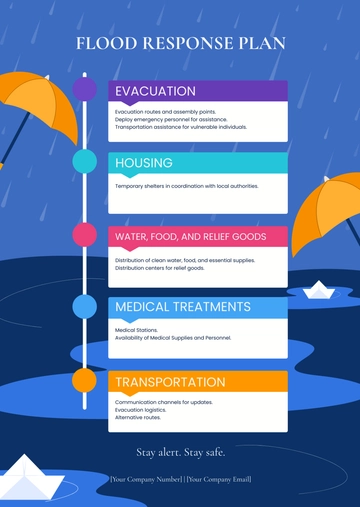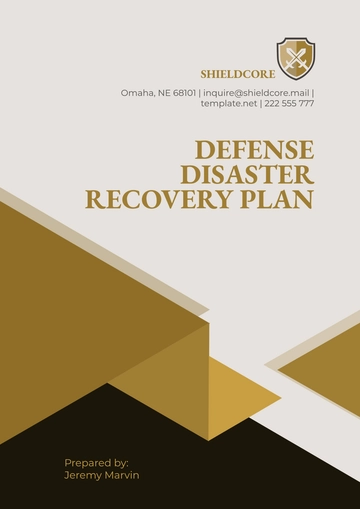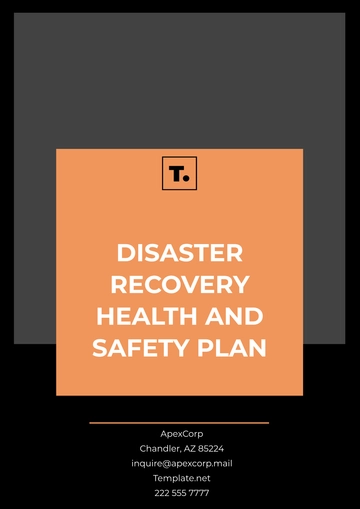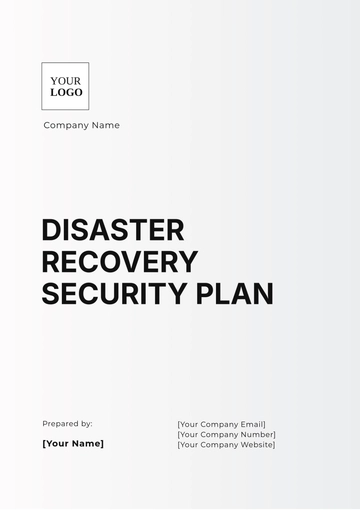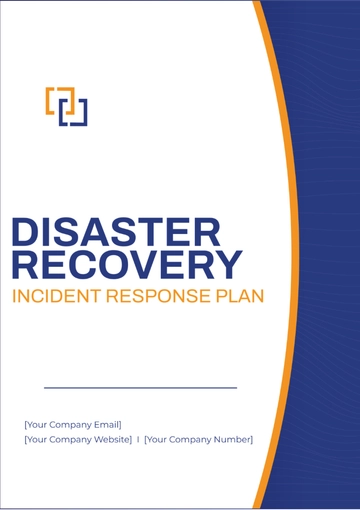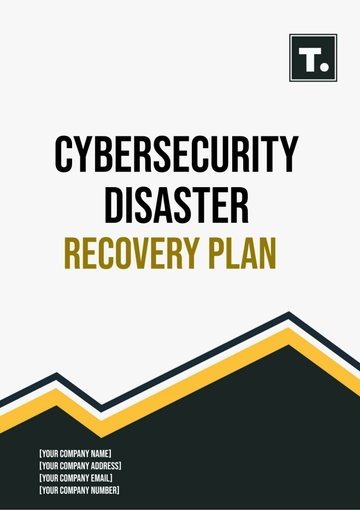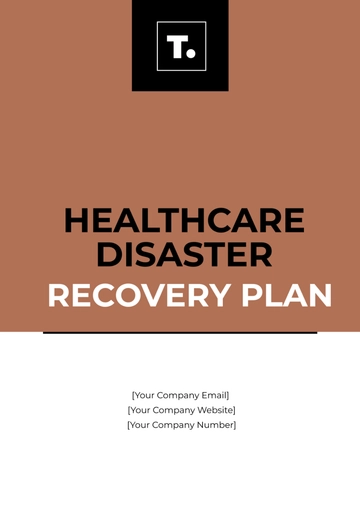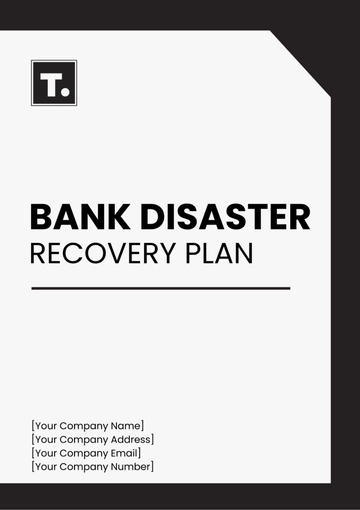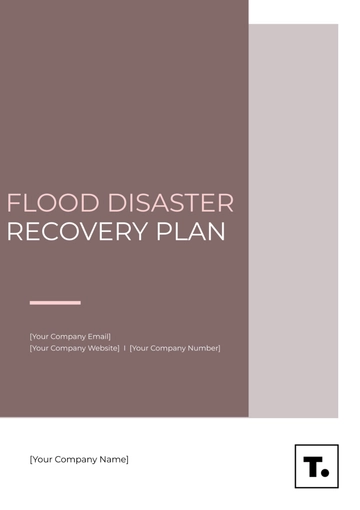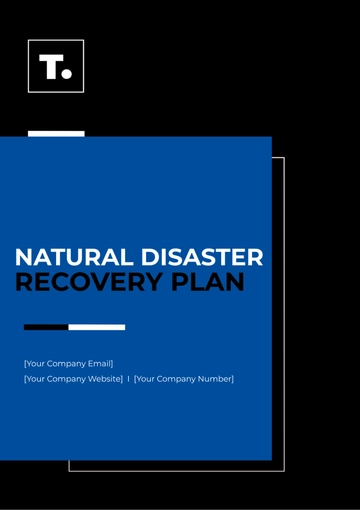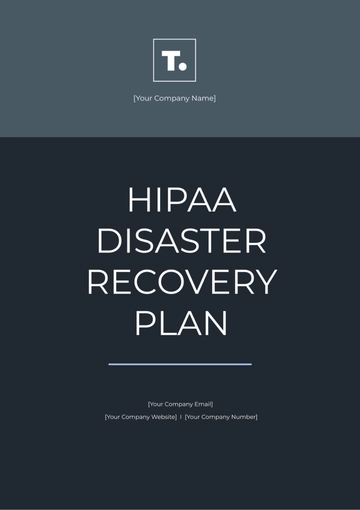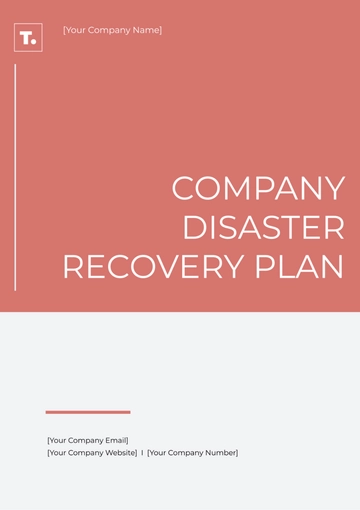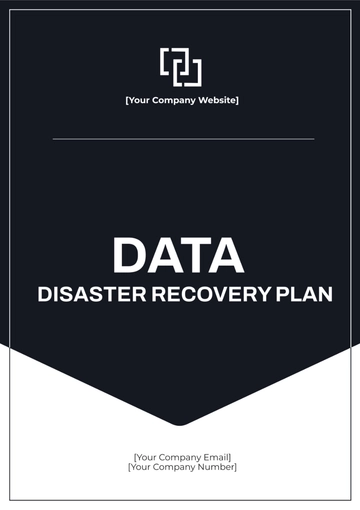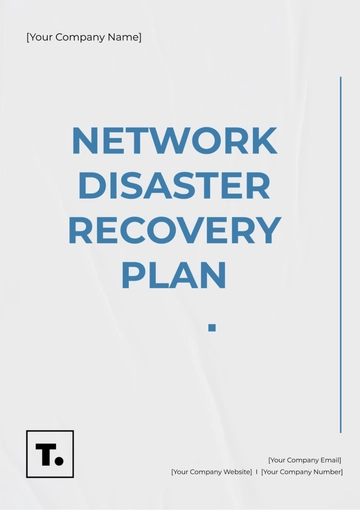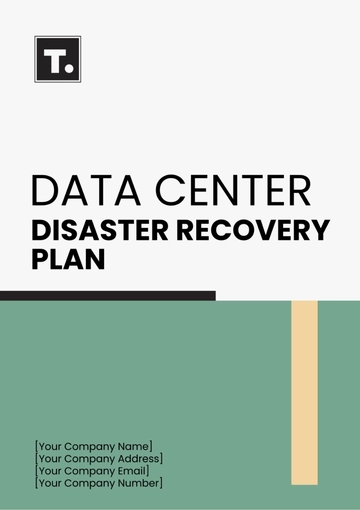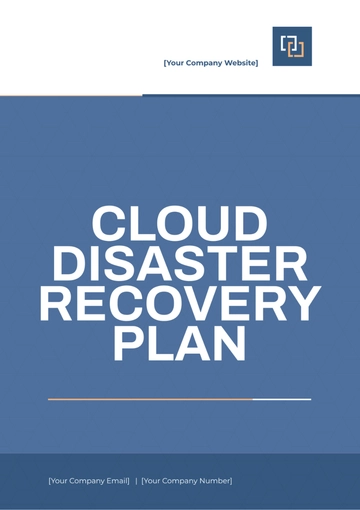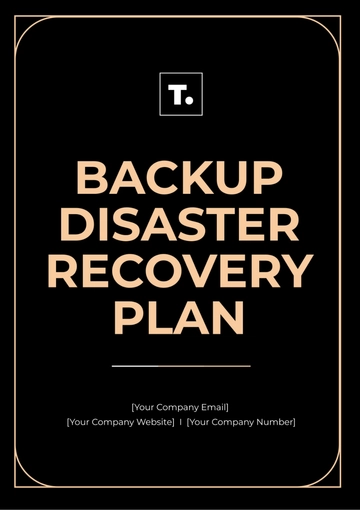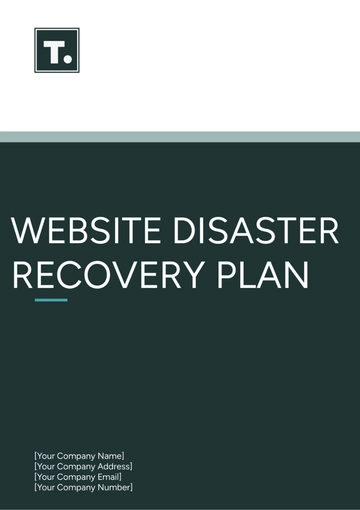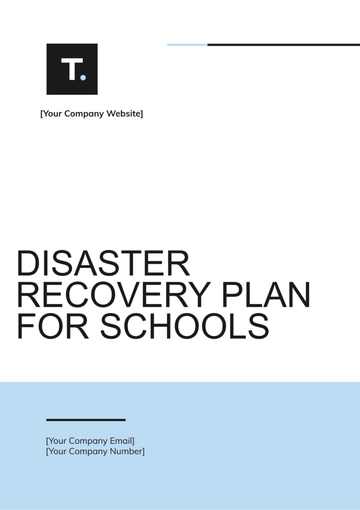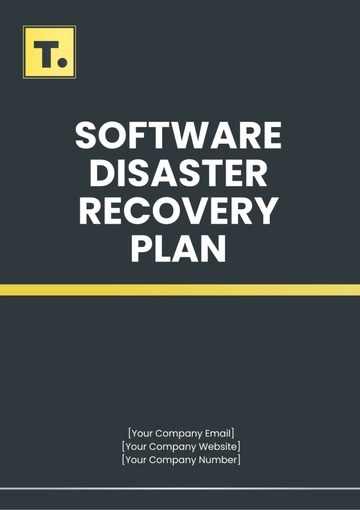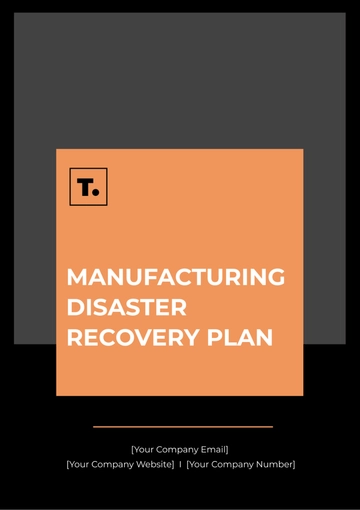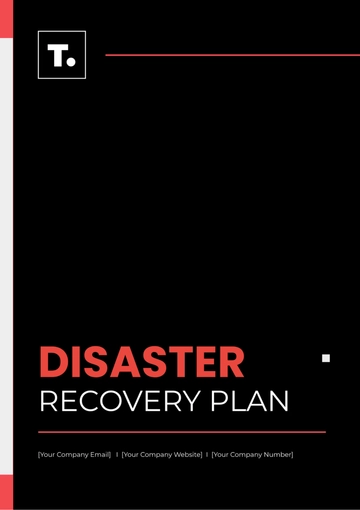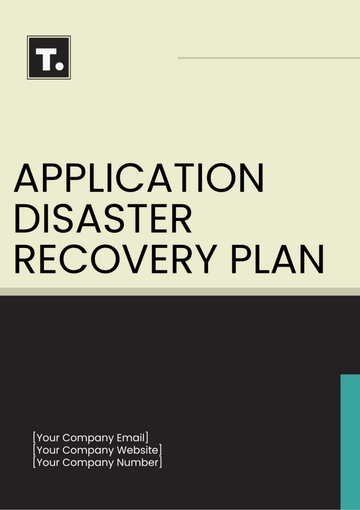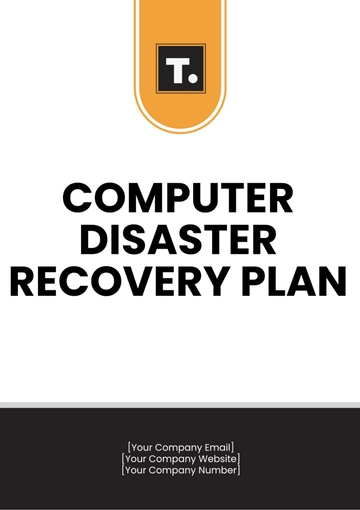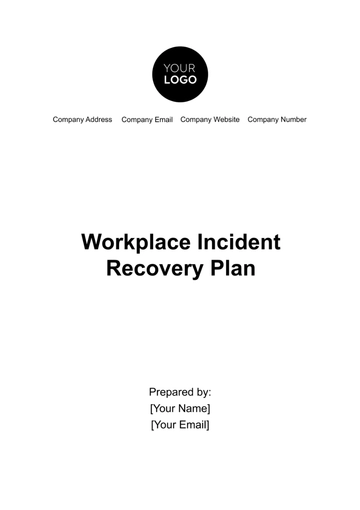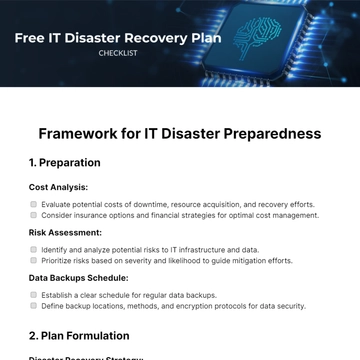Free Application Disaster Recovery Plan
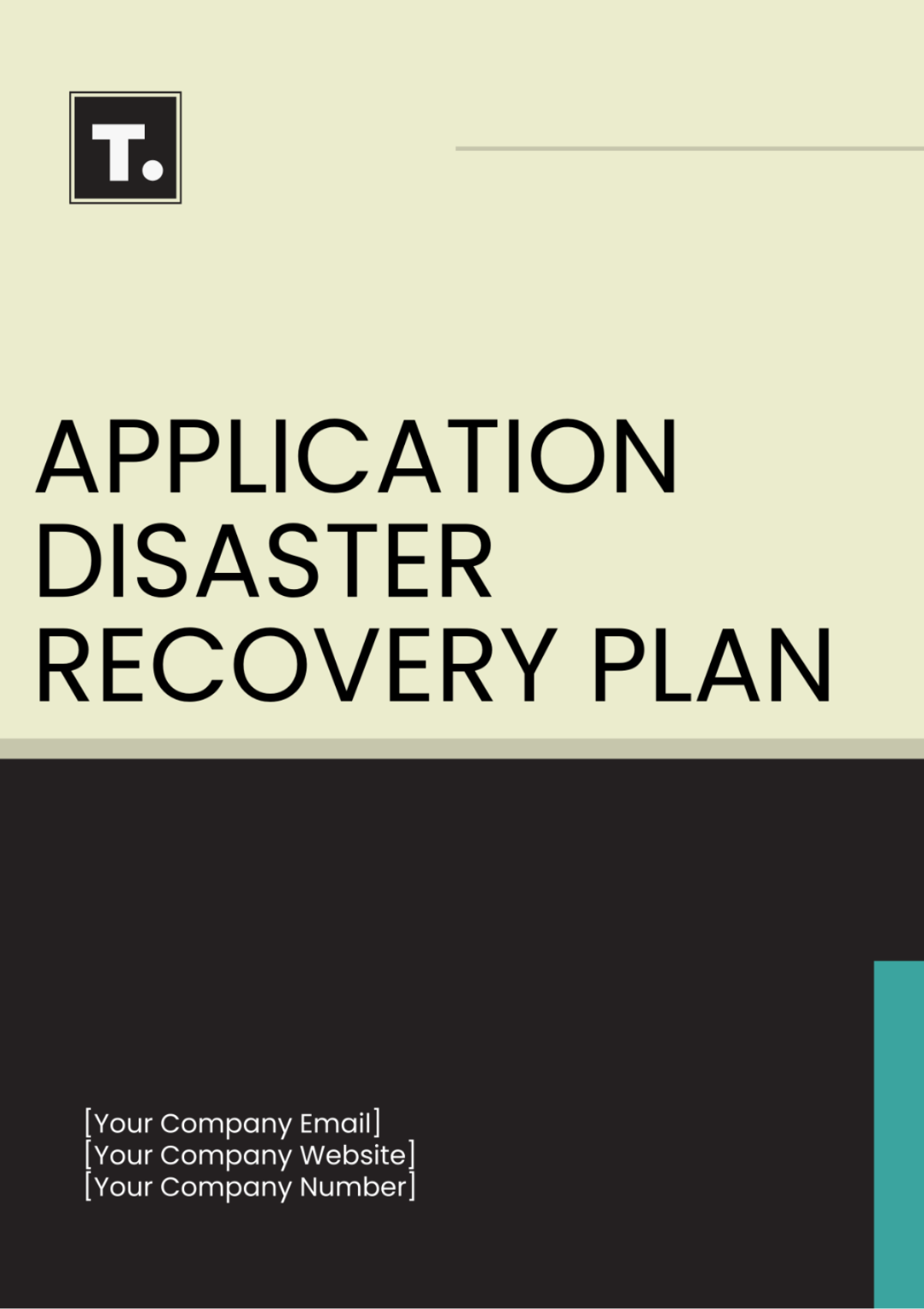
I. Introduction
A. Purpose
The purpose of this Application Disaster Recovery Plan (ADRP) is to establish a structured framework for responding to and recovering from disasters that affect critical applications within [Your Company Name].
B. Scope
This ADRP encompasses all essential applications vital for the operation of [Your Company Name]. It outlines procedures for restoring application functionality in the event of natural disasters, cyber-attacks, hardware failures, and other emergencies.
1. In-Scope Applications
Identify and list all critical applications covered by the disaster recovery plan.
Application Name | Department |
|---|---|
[App 1] | [Department 1] |
[App 2] | [Department 2] |
[App 3] | [Department 3] |
2. Out-of-Scope Applications
Specify any applications not covered by this plan and provide reasons for their exclusion.
C. Objectives
Minimize disruption to business operations by ensuring the availability of critical applications.
Ensure the timely recovery of critical applications to meet business needs and customer expectations.
Safeguard the reputation and assets of [Your Company Name] by protecting sensitive data and maintaining compliance with regulatory requirements.
Comply with regulatory requirements and industry standards related to application availability and data protection.
II. Roles and Responsibilities
A. Disaster Recovery Team
1. Team Members
Identify individuals comprising the disaster recovery team and their respective roles.
Team Member | Role | Phone | |
|---|---|---|---|
[Name 1] | [Role 1] | [Email 1] | [Phone 1] |
[Name 2] | [Role 2] | [Email 2] | [Phone 2] |
[Name 3] | [Role 3] | [Email 3] | [Phone 3] |
2. Responsibilities
Define the specific responsibilities of each team member during the application recovery process.
B. IT Department
1. IT Personnel
List key IT personnel involved in application recovery efforts and their roles.
IT Personnel | Role | Phone | |
|---|---|---|---|
[Name 1] | IT Manager | [Email 1] | [Phone 1] |
[Name 2] | System Admin | [Email 2] | [Phone 2] |
[Name 3] | Network Admin | [Email 3] | [Phone 3] |
2. Technical Support
Detail the technical support provided by the IT department during application recovery.
C. Application Owners
1. Roles and Responsibilities
Outline the roles and responsibilities of application owners in coordinating recovery efforts and providing support.
Application Owner | Department | Phone | |
|---|---|---|---|
[Name 1] | [Department 1] | [Email 1] | [Phone 1] |
[Name 2] | [Department 2] | [Email 2] | [Phone 2] |
[Name 3] | [Department 3] | [Email 3] | [Phone 3] |
2. Application Inventory
Maintain an inventory of applications owned by respective departments for reference during recovery.
III. Risk Assessment
A. Threat Analysis
Threats | Details |
|---|---|
Natural Disasters | Earthquakes, floods, fires, storms |
Technological Failures | Hardware malfunctions, software bugs, network failures, power outages |
Human Threats | Cyber-attacks (e.g., malware, ransomware), sabotage, human errors (e.g., misconfiguration) |
B. Vulnerability Assessment
Component | Details |
|---|---|
Risk Identification | Vulnerabilities in application infrastructure, software, hardware, and networks |
Impact Analysis | Potential impact on application availability, data integrity, and confidentiality |
Mitigation Strategies | Regular software updates, security patches, access controls, encryption, employee training |
IV. Backup and Recovery Procedures
A. Backup Strategy
Data Backup Frequency: Define the frequency of backups for critical application data based on business requirements and data volatility.
Backup Storage: Specify storage locations for backups, including on-site and off-site options for redundancy.
Backup Verification: Establish procedures for verifying the integrity and completeness of backups through regular testing and validation.
B. Recovery Point Objective (RPO) and Recovery Time Objective (RTO)
Metrics | Details |
|---|---|
RPO Definition | Maximum acceptable data loss set at 1 hour before a disaster occurs. |
RTO Definition | Maximum allowable downtime set at 4 hours for each application before normal operations must be restored. |
RPO and RTO Alignment | RPO and RTO metrics aligned with business objectives and application requirements to ensure timely recovery. |
C. Backup and Restoration Processes
Backup Procedures: Document step-by-step procedures for backing up application data, including data selection, transfer methods, and verification.
Restoration Procedures: Document procedures for restoring application data and functionality in the event of a disaster, including prioritization and validation steps.
V. Communication Plan
A. Notification Procedures
Incident Notification: Define procedures for notifying stakeholders and relevant personnel in the event of a disaster affecting applications.
Communication Channels: Identify primary and alternative communication channels for disseminating information and updates during recovery efforts.
B. Stakeholder Communication
Internal Communication: Outline communication methods and protocols for coordinating recovery efforts within the organization.
External Communication: Define procedures for communicating with customers, vendors, and other external stakeholders regarding application availability and recovery progress.
VI. Testing and Maintenance
A. Testing Schedule
Test Frequency: Regular tests and simulations scheduled to validate the effectiveness of the recovery plan.
Test Scenarios: Specific disaster scenarios defined to evaluate the readiness of the recovery procedures.
B. Maintenance Procedures
Plan Review: Procedures established for reviewing and updating the recovery plan to reflect changes in application infrastructure, technology, or business requirements.
Lessons Learned: Continuous improvement approach integrating insights from tests and real incidents to enhance response and recovery capabilities.
VII. Training and Awareness
A. Training Program
Training Modules: Develop training modules to educate IT teams, application owners, and other personnel on their roles and responsibilities during application recovery efforts.
Training Schedule: Establish a schedule for conducting training sessions and workshops to ensure ongoing awareness and preparedness.
B. Awareness Campaigns
Awareness Initiatives: Implement awareness initiatives to promote a culture of preparedness and emphasize the importance of application disaster recovery across the organization.
Communication Channels: Utilize various communication channels, such as email, intranet, and posters, to disseminate information and updates about application recovery.
VIII. Documentation and Reporting
A. Documentation Standards
Document Repository: Establish a centralized repository for storing all documentation related to the application disaster recovery plan.
Version Control: Implement version control procedures to track changes and updates to the recovery plan over time.
B. Reporting Procedures
Incident Reporting: Define procedures for reporting incidents, test results, and other relevant information to stakeholders and senior management.
Reporting Metrics: Establish metrics for evaluating the effectiveness of the recovery plan and identifying areas for improvement.
IX. Appendices
A. Glossary of Terms
RPO (Recovery Point Objective): The maximum acceptable amount of data loss measured in time before a disaster occurs.
RTO (Recovery Time Objective): The maximum allowable downtime for each application before normal operations must be restored.
B. Contact Information
Internal Contacts: Compile a list of contact information for key personnel involved in application recovery efforts, including names, roles, email addresses, and phone numbers.
External Contacts: Include contact information for external vendors, service providers, and regulatory agencies involved in application recovery efforts.
C. Supporting Documentation
System Diagrams: Include system diagrams and network configurations to provide a visual representation of application infrastructure.
Vendor Contracts: Attach copies of vendor contracts and service level agreements (SLAs) relevant to application recovery and support.
X. Approval and Review
A. Approval Process
Stakeholder Review: Obtain feedback and approval from relevant stakeholders, including IT teams, application owners, and senior management.
Final Approval: Obtain final approval for the application disaster recovery plan from senior management or the designated approval authority.
B. Review and Update Schedule
Review Frequency: Specify the frequency at which the application disaster recovery plan will be reviewed for updates and revisions.
Update Process: Outline the process for incorporating feedback, lessons learned, and changes in technology or business requirements into the recovery plan.
Contact Details
Company Name: [Your Company Name]
Location: [Your Company Address]
- 100% Customizable, free editor
- Access 1 Million+ Templates, photo’s & graphics
- Download or share as a template
- Click and replace photos, graphics, text, backgrounds
- Resize, crop, AI write & more
- Access advanced editor
Ensure seamless application recovery with Template.net's customizable and editable Application Disaster Recovery Plan Template. Editable in our AI Tool, this template provides a structured approach to manage and recover applications during disasters, enhancing business continuity and minimizing downtime.
You may also like
- Finance Plan
- Construction Plan
- Sales Plan
- Development Plan
- Career Plan
- Budget Plan
- HR Plan
- Education Plan
- Transition Plan
- Work Plan
- Training Plan
- Communication Plan
- Operation Plan
- Health And Safety Plan
- Strategy Plan
- Professional Development Plan
- Advertising Plan
- Risk Management Plan
- Restaurant Plan
- School Plan
- Nursing Home Patient Care Plan
- Nursing Care Plan
- Plan Event
- Startup Plan
- Social Media Plan
- Staffing Plan
- Annual Plan
- Content Plan
- Payment Plan
- Implementation Plan
- Hotel Plan
- Workout Plan
- Accounting Plan
- Campaign Plan
- Essay Plan
- 30 60 90 Day Plan
- Research Plan
- Recruitment Plan
- 90 Day Plan
- Quarterly Plan
- Emergency Plan
- 5 Year Plan
- Gym Plan
- Personal Plan
- IT and Software Plan
- Treatment Plan
- Real Estate Plan
- Law Firm Plan
- Healthcare Plan
- Improvement Plan
- Media Plan
- 5 Year Business Plan
- Learning Plan
- Marketing Campaign Plan
- Travel Agency Plan
- Cleaning Services Plan
- Interior Design Plan
- Performance Plan
- PR Plan
- Birth Plan
- Life Plan
- SEO Plan
- Disaster Recovery Plan
- Continuity Plan
- Launch Plan
- Legal Plan
- Behavior Plan
- Performance Improvement Plan
- Salon Plan
- Security Plan
- Security Management Plan
- Employee Development Plan
- Quality Plan
- Service Improvement Plan
- Growth Plan
- Incident Response Plan
- Basketball Plan
- Emergency Action Plan
- Product Launch Plan
- Spa Plan
- Employee Training Plan
- Data Analysis Plan
- Employee Action Plan
- Territory Plan
- Audit Plan
- Classroom Plan
- Activity Plan
- Parenting Plan
- Care Plan
- Project Execution Plan
- Exercise Plan
- Internship Plan
- Software Development Plan
- Continuous Improvement Plan
- Leave Plan
- 90 Day Sales Plan
- Advertising Agency Plan
- Employee Transition Plan
- Smart Action Plan
- Workplace Safety Plan
- Behavior Change Plan
- Contingency Plan
- Continuity of Operations Plan
- Health Plan
- Quality Control Plan
- Self Plan
- Sports Development Plan
- Change Management Plan
- Ecommerce Plan
- Personal Financial Plan
- Process Improvement Plan
- 30-60-90 Day Sales Plan
- Crisis Management Plan
- Engagement Plan
- Execution Plan
- Pandemic Plan
- Quality Assurance Plan
- Service Continuity Plan
- Agile Project Plan
- Fundraising Plan
- Job Transition Plan
- Asset Maintenance Plan
- Maintenance Plan
- Software Test Plan
- Staff Training and Development Plan
- 3 Year Plan
- Brand Activation Plan
- Release Plan
- Resource Plan
- Risk Mitigation Plan
- Teacher Plan
- 30 60 90 Day Plan for New Manager
- Food Safety Plan
- Food Truck Plan
- Hiring Plan
- Quality Management Plan
- Wellness Plan
- Behavior Intervention Plan
- Bonus Plan
- Investment Plan
- Maternity Leave Plan
- Pandemic Response Plan
- Succession Planning
- Coaching Plan
- Configuration Management Plan
- Remote Work Plan
- Self Care Plan
- Teaching Plan
- 100-Day Plan
- HACCP Plan
- Student Plan
- Sustainability Plan
- 30 60 90 Day Plan for Interview
- Access Plan
- Site Specific Safety Plan
